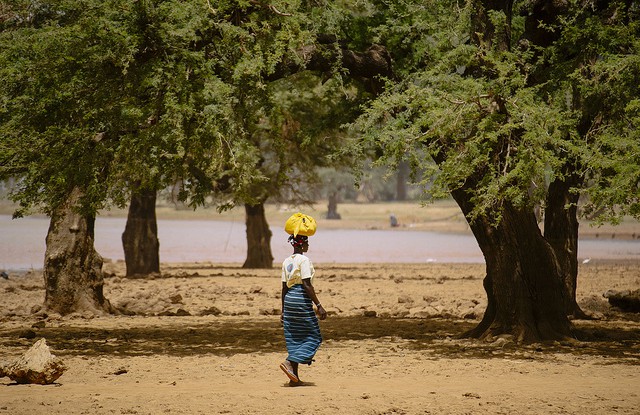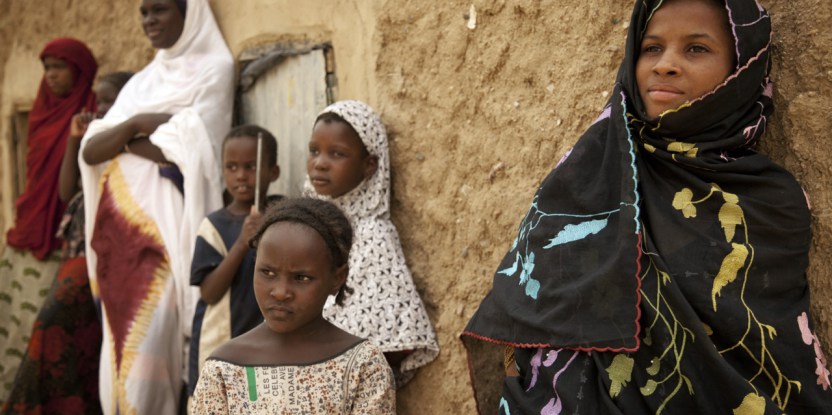
MONTPELLIER, France — With climate change proceeding faster than previously expected, there is a growing realization that adapting to it will be as important as mitigating it.
But how policymakers build resilience to climate change raises thorny questions. At what point do we stop pursuing incremental changes in favor of disruptive, transformative change? Do transformations occur only when it is too late? And what even constitutes a “transformation”?
A recent conference saw climate and development experts grapple with these questions, drawing on real-world examples that reflected a diversity of approaches to some of humanity’s most pressing challenges.
“In some situations, incremental adaptation may not be sufficient,” said Claudia Comberti of the University of Oxford’s Environmental Change Institute. “Transformative adaptation is more relevant in contexts where change is more rapid or extreme, or where people are more vulnerable to it — yet there has not been much written about it yet,” she said at the recent Resilience 2014 conference in Montpellier, France.
In ecological terms, “resilience” is the capacity to deal with change and continue to develop; the term has gained currency in business and development discourses.
Differentiating between types of responses to build resilience, Edmond Dounias, a researcher at the Research Institute for Development (IRD) and the Center for International Forestry Research (CIFOR), offered a definition: “In incremental adaptation, there is change, but the basic characteristics of the system are maintained. Transformation means crossing a threshold: you were A and you become B.”
The quest for scientific criteria to distinguish incremental from transformational adaptation to climate change may appear purely academic, but it could have significant policy implications.
“If you have transformation, you need to reconstruct a different society and environment. It is not necessarily bad, but it is a radical shift, in which outside assistance may be more justified than in incremental adaptation,” Dounias said.
WHEN IS IT A ‘TRANSFORMATION’?
While the separation is clear on paper, identifying transformational change in complex socio-ecosystems can be difficult.
Dounias shared one example from his research on the Tikar community in Cameroon. Grain farmers in this community had migrated to an ecotone environment — that is, the transition zone between two types of ecosystems — between the savannah and forests of central Cameroon, only to face the threat of rapid forest expansion over their agricultural land. After decades of shifting cultivation and short-term migration from one set of fields to the next, the Tikar changed the way they relate to the environment.
First, they established belts of agroforestry plantations to control forest growth. Then, the spread of the invasive shrub Chromolaena odorata (Siam weed) offered them an unexpected way of strengthening their livelihoods: “If they burn the shrubs late in the dry season, the fire kills the seedlings that form the forest expansion, and the ash is very good so they can come back to the same fallow after five years instead of 15 to 20 years previously,” Dounias observed.
Yet according to Dounias, such deep changes do not amount to transformative adaptation: “In transformation, irreversible shifts happen both at the social and ecological level. But in this case the goal is to safeguard social resilience,” he said.
We cannot just ask people to adapt. The key question is, where do we build resilience and where do we need transformational change?
CIFOR scientist Houria Djoudi, who studies the implementation of community forest management in Burkina Faso, also highlighted the difficulty in assessing the incremental or transformative nature of adaptation. Since national legislation introduced community forest management groups in the 1990s, “the government of Burkina Faso has been trying to expand those experiences at the national level, convinced that these experiences are transforming forest-management practices,” Djoudi said at the conference.
Yet her survey of local communities revealed that the apparent sweeping change in decision-making fell short of affecting entire local communities, as migrants — who in some cases made up the majority of the population — were de facto excluded from the new institutions.
“There are efforts to achieve change, but we are not sure it will lead to transformative adaptation because the transfer of power already goes towards people who already have privileged access and control over resources as well as power at the local level,” she said.
What this means, Djoudi said, is that research should move beyond traditional studies focussing on a vertical power analysis (State-communities) to include power relations within communities in order to better understand the multi-level, complex dynamics of adaptation.
‘CANNOT JUST ASK PEOPLE TO ADAPT’
Her colleague Denis Gautier, a CIRAD and CIFOR scientist, added that transformation could hide in individual decisions that do not appear at the community level.
“If you ask farmers about a specific event, they will answer in terms of the coping adjustments they made, such as selling a farm animal. But in societies where livestock is capital, this response may be part of a more complex strategy in the long term,” he said.
Policymakers present at the Resilience 2014 conference expressed hope that research would enable them to make informed decisions about helping societies strengthen their way of life and their environment in the face of change — or reform them radically.
“Climate change and demographics pose such huge problems that [incremental] resilience alone is not the answer,” said Jean-Marc Châtaigner, who heads the office in charge of overseas development assistance at the French Ministry of Foreign Affairs.
“We cannot just ask people to adapt. The key question is, where do we build resilience and where do we need transformational change?”
For more information about these topics, please contact Houria Djoudi at h.djoudi@cgiar.org.
We want you to share Forests News content, which is licensed under Creative Commons Attribution-NonCommercial-ShareAlike 4.0 International (CC BY-NC-SA 4.0). This means you are free to redistribute our material for non-commercial purposes. All we ask is that you give Forests News appropriate credit and link to the original Forests News content, indicate if changes were made, and distribute your contributions under the same Creative Commons license. You must notify Forests News if you repost, reprint or reuse our materials by contacting forestsnews@cifor-icraf.org.
